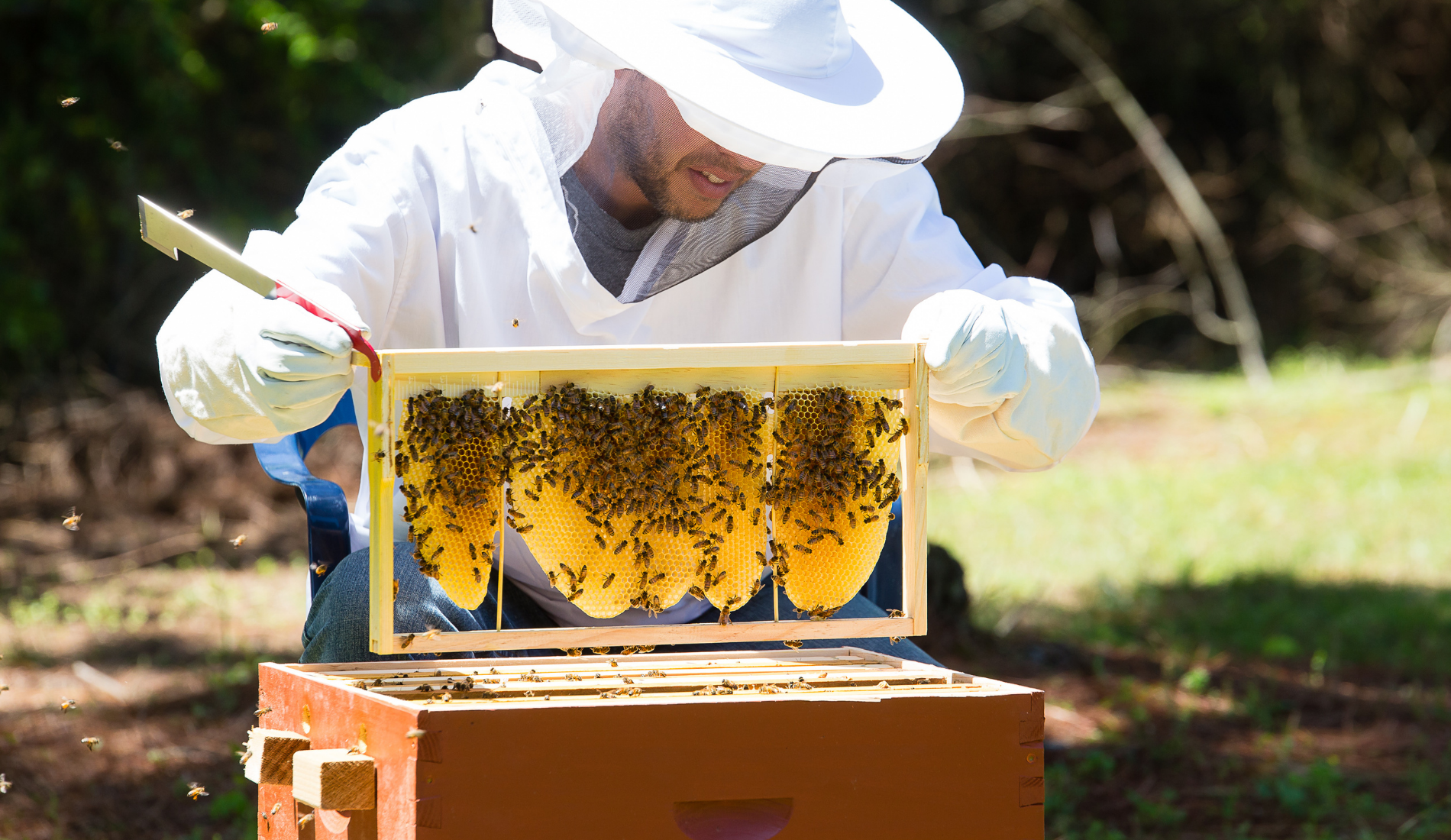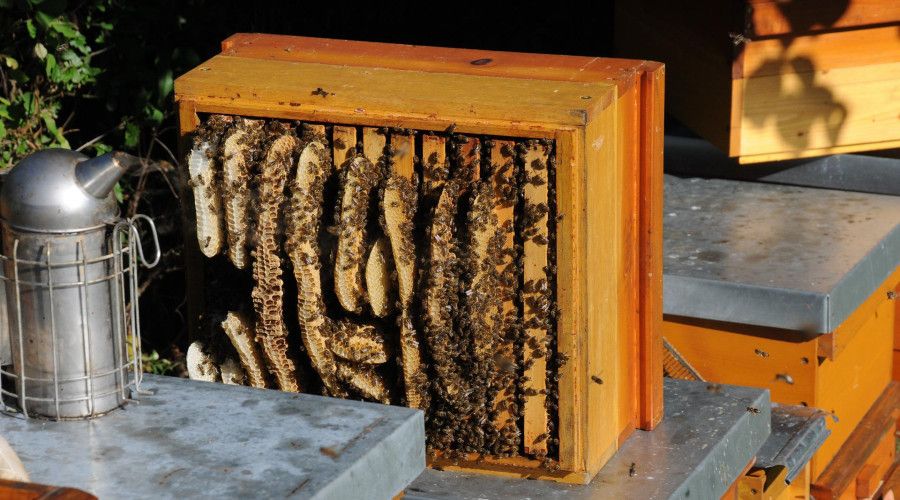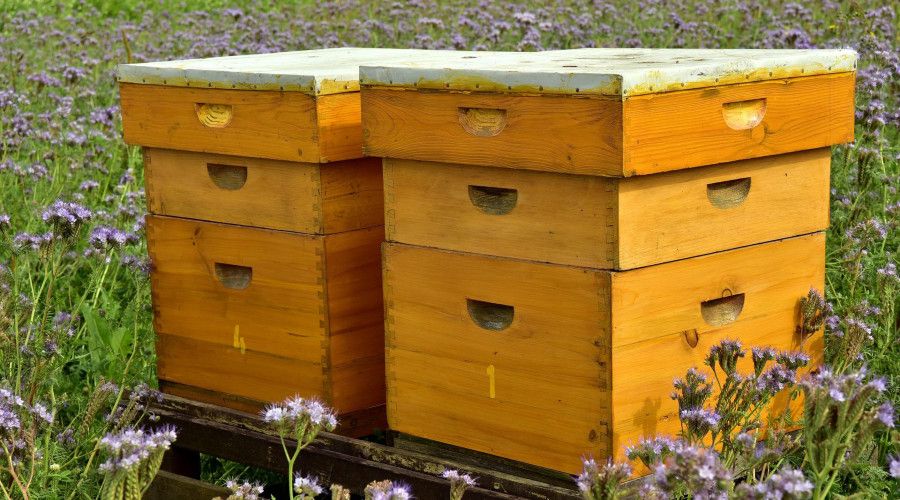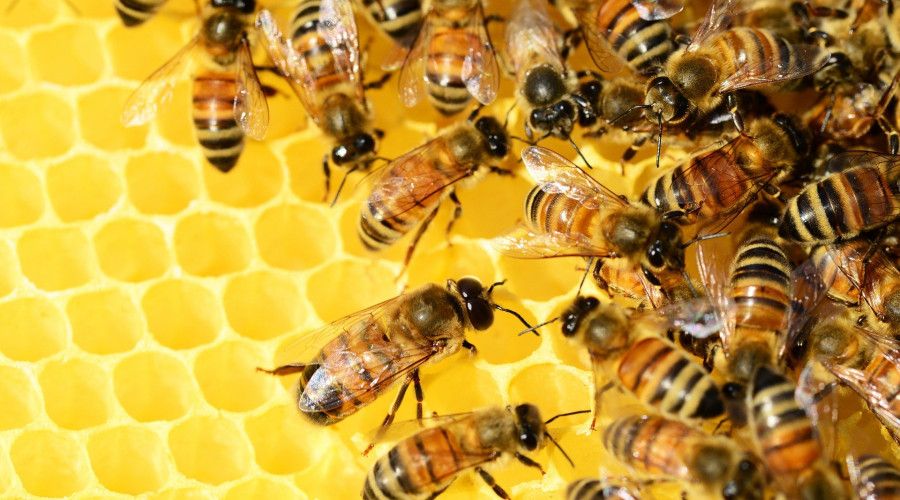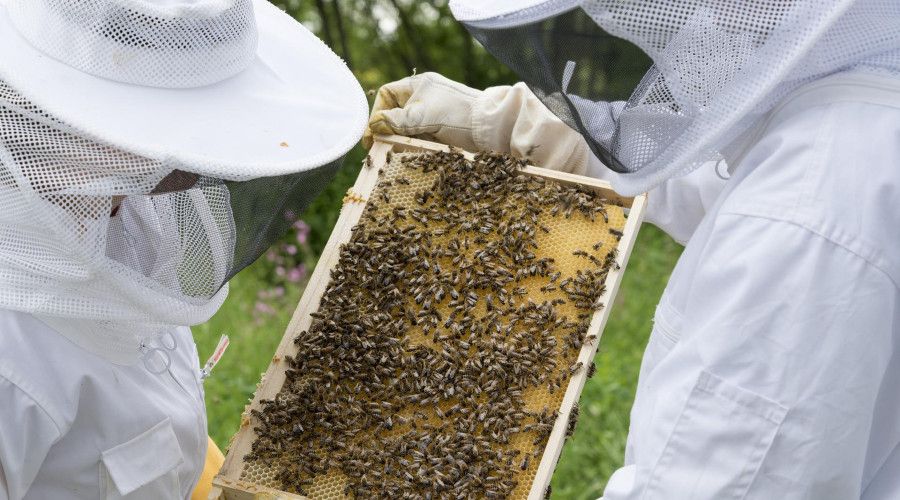There’s nothing so sweet and satisfying as fresh honey. And no beauty and skincare products are better than those with bee and honey products in one form or another. Plus, the world just needs more bees. So whatever your motivation for keeping bees at home is, this short tutorial can help you get started with the art of beekeeping for your backyard colony.
What You Need to Start Beekeeping at Home
Image credits: M. Roth via Pixabay
Before you get started, there are several supplies you’ll want to make sure you have on hand for your new beekeeping venture. These are all extremely important for the health and safety of your bees as well as yourself and your family – so don’t skip any!
- Protective gear – beekeeper’s garb with screened mask, gloves, boots
- Smoker
- Beehives
- Hive tool
- Feeders
- Frames
- Queen catcher
- Queen attractor (essential oils or special attractors available for purchase)
- Sugar
- Queen excluded
- Queen marker
- Bees
- Queen bee
- Honey collection equipment
Step-by-Step Instructions for Beekeeping
Once you’ve gathered your supplies (save for the queen and the bees – they should come last!), prepare yourself for beekeeping by thoroughly reading and following these steps. They’ll help you prepare and keep your bees happy and healthy along the way – as well as keep you safe and happy as you keep the bees.
Step 1 – Choose Your Hive System
Image credits: Ulrike Leone via Pixabay
There are two main types of systems used in beekeeping. The first is known as the Langstroth hive, which is composed of boxes stacked on top of each other, containing frames in which bees build their combs and store that tasty, sweet honey.
The second system is a top-bar hive, in which bees' frames are stored horizontally. The bees make their combs without foundations in the system, and each bar contains comb and honey. It is pulled out of the top of the hive. Most folks use the stacked box system, especially beginners, as they find it easier to maintain.
Step 2 – Get the Rest of Your Equipment
Image credits: Olga Ivanova via Canva
Once you’ve gotten your hive system in place, you need to make sure you get the rest of your supplies and equipment purchased, cleaned, and ready. Use basic soap and water to remove dust from anything (no chemicals) and let completely air dry before putting it to use.
Step 3 – Get Your Bees
Image credits: PollyDot via Pixabay
It’s important to order your bees before the beekeeping season begins, as many places will run out by April. Order in January in time for your pickup or delivery in April or May. It may mean that you’ll technically purchase your bees before getting all of your equipment in place. That’s fine. The key is having the equipment before your bees arrive.
Check with your local beekeeping association for purchasing options and decide between package bees, buying an existing hive, nucs, or catching a swarm. The association should be able to help you determine which option is best for your situation.
Step 4 – Introduce Your Bees to Their New Hive
Image credits: semakokal via Canva
Now, it’s time to bring those honey makers home – and introduce them to their new home. Put on your safety equipment before you begin the process. Give the bees a healthy dose of sugar syrup before you get them out of the package to move them. It will help them feel happier and less likely to fly around and cause issues. (When they’re well-fed, they crawl as their preferred mode of transport.)
If possible, invite an experienced beekeeper over to help you with the process of moving them from their package to the new hive. It will help ensure fewer bee fatalities and issues.
Step 5 – Keep Your Bees Healthy and Happy
Image credits: Thomas Völcker via Pixabay
As the seasons pass, you’ll need to give your bees ongoing care. It won’t be extensive and will mostly involve observation, but they need your attention regularly to ensure they’re healthy and happy. Watch the hive activity to make sure it’s normal and uninterrupted. And organize your beekeeping calendar by season, from placement of the bees in spring to harvesting honey and prepping their homes for winter.
From Here, It’s All Honey
Once your bees are settled, and you’ve learned how to properly maintain their homes and prepare for the variation of seasons, you’ll have honey collecting on your mind. And what a sweet reward for all their hard work and yours! Be sure to carefully remove honey and store it properly for long-lasting enjoyment of nature’s liquid gold.

